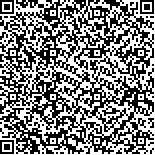| 摘要: |
| An earthquake significant on the Richter scale occurring in an area with a high population density requires an effective and equitable emergency response plan. Emergency resources are usually located in so-called responding centers. One of the first problems faced by disaster-response management personnel in the rapidly degrading post-earthquake conditions is to gage the hazard rate to which the disaster-affected area is subjected, estimate the time taken to bring the situation under control, also called restoration time, and select the appropriate responding center for relief-and-rescue activities. In this paper, we propose an elaborate semi-Markov model to capture the stochastic dynamics of the events that follow an earthquake, which will be used to quantify the hazard rate to which people are exposed and estimate the restoration time. The model will be further used, via dynamic programming, to determine the appropriate responding center. Our proposed model can be employed in conjunction with a variety of hazard scales and by collecting data on a few parameters related to emergency management. The model will be particularly useful in a smart city, where historic data on events following an earthquake would be systematically and accurately recorded. |
| 关键词: Emergency management, earthquake, hazard, Markov chains, smart city, degradation |
| DOI: |
|
| 基金项目:This work was partially supported by the University of Missouri Research Board (No. 09-01-2010). |
|
| A semi-Markov model for post-earthquake emergency response in a smart city |
| S. Ghosh,A. Gosavi |
| (Department of Engineering Management and Systems Engineering, Missouri University of Science and Technology, Rolla, MO 65409, U.S.A.) |
| Abstract: |
| An earthquake significant on the Richter scale occurring in an area with a high population density requires an effective and equitable emergency response plan. Emergency resources are usually located in so-called responding centers. One of the first problems faced by disaster-response management personnel in the rapidly degrading post-earthquake conditions is to gage the hazard rate to which the disaster-affected area is subjected, estimate the time taken to bring the situation under control, also called restoration time, and select the appropriate responding center for relief-and-rescue activities. In this paper, we propose an elaborate semi-Markov model to capture the stochastic dynamics of the events that follow an earthquake, which will be used to quantify the hazard rate to which people are exposed and estimate the restoration time. The model will be further used, via dynamic programming, to determine the appropriate responding center. Our proposed model can be employed in conjunction with a variety of hazard scales and by collecting data on a few parameters related to emergency management. The model will be particularly useful in a smart city, where historic data on events following an earthquake would be systematically and accurately recorded. |
| Key words: Emergency management, earthquake, hazard, Markov chains, smart city, degradation |

